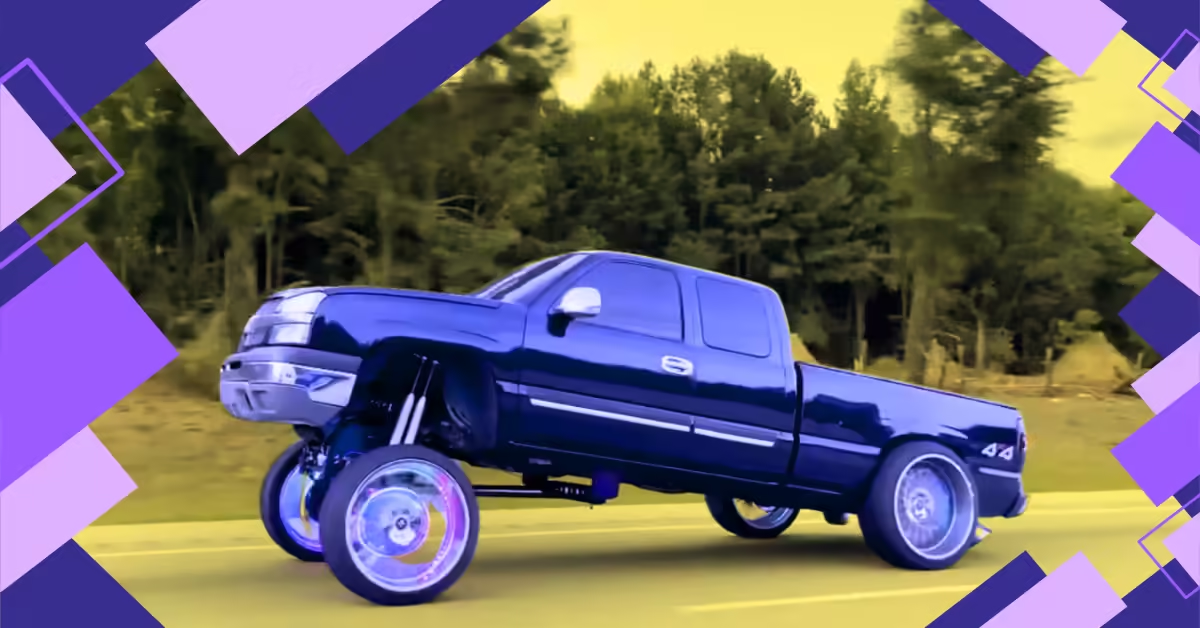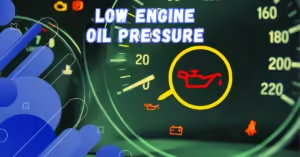In the world of automotive customizations, few trends have sparked as much conversation and controversy as the squatted truck. Love it or hate it, the squatted truck has gained popularity, particularly in certain regions of the United States. But what exactly is a squatted truck? What are the pros and cons of owning one? And perhaps most importantly, is it even legal? In this blog post, we’ll answer these questions and explore everything you need to know about squatted truck
What is a Squatted Truck?
A vehicle known as the “Carolina Squat,” is a vehicle, usually a pickup truck or SUV, where the rear end sits lower than the front. This modification is primarily achieved by altering the suspension, giving the vehicle a slanted appearance. The trend originated from off-road racing, where trucks would often tilt back due to the extreme angles of the terrain. Over time, this functional style was adopted for purely aesthetic purposes, becoming a popular customization in the truck community.
The History of Squatted Trucks
The origins of this modification can be traced back to Baja racing, a form of off-road racing popular in deserts, particularly in Mexico and the southwestern United States. In these races, vehicles often land hard on their rear suspensions after jumping over sand dunes, resulting in a temporary squat. Enthusiasts who admired this look began modifying their trucks to permanently achieve the stance, leading to the rise of the trend in the mid-2010s.
While it may have started with a functional purpose, the squatted truck trend quickly transitioned into a purely stylistic choice. Its popularity spread across social media platforms, leading to a growing community of fans and critics alike.
Why Do People Squat Their Trucks?
There are several reasons why people squat their trucks, and it’s not always about practicality. Here are some of the common motivations:
- Aesthetic Appeal – For many truck owners, the squatted look is a way to make their vehicle stand out. The dramatic stance, with the front of the truck raised and the rear lowered, catches attention on the road.
- Off-Road Inspiration – Some enthusiasts appreciate the roots of the trend in off-road racing and want their truck to reflect that heritage, even if they don’t necessarily use it for off-road activities.
- Cultural Influence – This trend has become a part of certain regional subcultures, especially in the southeastern United States. Owning a truck with this modification can signal affiliation with these communities.
- Personal Expression – Like many vehicle modifications, squatting a truck is a form of personal expression. Owners often take pride in customizing their trucks to reflect their unique style and taste.
Pros and Cons
Pros:
- Distinctive Style: Trucks with this stance have a unique look that sets them apart from other vehicles on the road. The sloped stance can make a truck look more aggressive or stylish, depending on personal preference.
- Cultural Connection: For those who live in areas where this trend is prevalent, owning a modified truck can create a sense of belonging and connection to a specific community or culture.
- Conversation Starter: Driving a truck like this is sure to turn heads and spark conversations, whether positive or negative.
Cons:
- Decreased Functionality: Modifying a truck this way can affect its utility, making it less suitable for towing or hauling heavy loads. The altered suspension may reduce the vehicle’s ability to handle well in off-road conditions, which is ironic given its origins.
- Poor Visibility: The raised front end of a truck with this modification can create blind spots, particularly for objects and pedestrians in front of the vehicle. This raises concerns about safety on the road.
- Uneven Ride: These trucks can offer an uncomfortable ride, especially on rough terrain. The uneven suspension may lead to a bumpy and less stable driving experience.
Is It Legal to Drive a Squatted Truck?
Laws surrounding these modifications vary from place to place, and it’s important to check local regulations before modifying your vehicle. In some states, such as North Carolina, these modifications have been outright banned due to safety concerns. These laws typically focus on the height difference between the front and rear of the vehicle, and exceeding a certain limit can result in fines or even impounding of the truck.
For example, North Carolina passed a law in 2021 banning vehicles that have a front lift of more than four inches higher than the rear. Other states are considering similar measures, particularly as the safety risks of these modifications become more widely recognized.
How to Squat a Truck Safely
If you’re considering squatting your truck, it’s essential to do so safely. Here’s a basic guide:
- Install Lift Kits: Most squatted trucks use front lift kits to achieve the raised front end. These kits come in different sizes, so choose one that fits your desired look.
- Modify Rear Suspension: Lowering the rear suspension is the second step. This can be done using drop kits, which lower the rear axle.
- Check for Legal Compliance: Before making any modifications, check local laws regarding truck alterations. Make sure your truck complies with all regulations to avoid fines.
- Ensure Proper Alignment: After modifying the suspension, it’s crucial to have your truck’s alignment checked to prevent handling issues.
Common Modifications for Squatted Trucks
Aside from suspension changes, many truck owners make additional modifications to enhance the look of their vehicles. Some common customizations include:
- Oversized Wheels: Big wheels with low-profile tires are a popular choice, adding to the aggressive look.
- Custom Paint Jobs: Vibrant paint colors, decals, and wraps are often used to make these trucks stand out even more.
- LED Lighting: Adding LED light bars or underglow lighting can give the truck a flashy appearance, especially at night.
Squatted Trucks and Safety Concerns
While squatted trucks can look stylish, they come with some significant safety concerns. One of the biggest issues is visibility. Because the front of the truck is raised, the driver’s view of the road directly in front of the vehicle is often obstructed. This can lead to accidents, especially in busy or pedestrian-heavy areas.
In addition, the uneven weight distribution caused by squatting can make the truck harder to control, especially at high speeds or on rough terrain. This imbalance can increase the risk of rollovers or loss of control.
Curious about other iconic trucks? Check out our deep dive into 7 Reasons Why the 1960 Chevy Truck is an American Classic to explore why it’s still revered today.
Squatted Trucks vs. Regular Trucks
When comparing trucks with this modification to regular trucks, the differences go beyond aesthetics. Here’s how they stack up:
- Performance: Regular trucks maintain a more balanced suspension, making them better suited for towing, hauling, and off-road driving. Trucks with altered stances, on the other hand, sacrifice some of this functionality for appearance.
- Comfort: Regular trucks generally provide a smoother, more comfortable ride, while those with uneven suspension can be jarring due to their modifications.
- Safety: Regular trucks offer better visibility and handling, making them safer in most driving conditions. Modified trucks can be more difficult to control and have larger blind spots, increasing the risk of accidents.
The Impact of Squatted Trucks on Suspension and Performance
Squatting a truck alters its suspension system in ways that can negatively affect performance. By lifting the front end and lowering the rear, the truck’s center of gravity is shifted, leading to imbalanced handling. This can make the vehicle harder to control, especially in emergency situations.
Additionally, squatted trucks may experience faster wear and tear on suspension components due to the uneven distribution of weight. This can lead to costly repairs and reduced overall vehicle longevity.
Squatted Truck Maintenance and Care
Maintaining a squatted truck requires extra attention to certain areas of the vehicle. Here are some tips:
- Regularly Check Suspension Components: Due to the modifications, your truck’s suspension system may wear out more quickly. Inspect shocks, springs, and struts frequently for signs of damage or wear.
- Align the Wheels Often: Squatting can throw your truck’s alignment off balance. Having the wheels aligned regularly will help maintain proper handling.
- Monitor Tire Wear: Uneven suspension can lead to uneven tire wear. Rotate your tires frequently and replace them as needed to ensure safe driving conditions.
Squatted Truck Culture and Community
The squatted truck trend has developed a passionate following, particularly in the southeastern United States. Enthusiasts often gather at car shows and meetups to showcase their customized trucks, share tips, and celebrate their love for the trend.
Despite its divisive nature, the squatted truck community is tight-knit, with many members taking pride in their unique vehicles and the attention they attract. Online forums and social media groups provide spaces for enthusiasts to connect and discuss all things squatted trucks.
Top Customizations for Squatted Trucks
In addition to the suspension modifications that give a truck its squatted appearance, many owners invest in other customizations to complete the look. Some popular choices include:
- Custom Grilles: A bold, aftermarket grille can give a squatted truck a more aggressive front end.
- Aftermarket Exhaust Systems: Many squatted truck owners opt for loud exhausts to complement the bold visual statement of their vehicle.
- Tinted Windows: Dark window tints add a sleek, mysterious look to a squatted truck and can also help reduce glare on sunny days.
The Future of Squatted Trucks: Trend or Fad?
The squatted truck trend has certainly made waves, but its future remains uncertain. While some enthusiasts believe it’s here to stay, others see it as a passing fad that will eventually be replaced by new trends. As more states begin to regulate or ban squatted trucks due to safety concerns, the trend may lose some of its momentum.
However, for now, squatted trucks continue to be a prominent feature of the automotive customization landscape, and it’s clear that they’ve left a lasting impression on car culture.
Conclusion
Squatted trucks are a polarizing modification in the automotive world. While some see them as an expression of individuality and style, others raise concerns about their safety and functionality. Whether you’re a fan or a critic, there’s no denying that squatted trucks have made an impact on the automotive scene.
FAQs: Everything You Need to Know About Squatted Trucks
- What is a squatted truck?
A squatted truck is a vehicle where the front end is raised higher than the rear, giving it a slanted appearance. - Why do people squat their trucks?
People squat their trucks for aesthetic reasons, cultural influence, and to pay homage to off-road racing origins. - Are squatted trucks safe?
Squatted trucks can present safety risks due to poor visibility and imbalanced handling. - Is it legal to drive a squatted truck?
Laws vary by state, but some states have banned squatted trucks due to safety concerns. - How much does it cost to squat a truck?
The cost to squat a truck can range from $500 to over $5,000, depending on the modifications. - What are the risks of driving a squatted truck?
Risks include poor handling, decreased visibility, and increased wear on suspension components. - Can squatted trucks be used for towing?
Squatted trucks are not ideal for towing due to their altered suspension, which affects stability. - Where did the squatted truck trend originate?
The trend originated in Baja off-road racing, where trucks would often squat after landing jumps. - Are squatted trucks comfortable to drive?
Squatted trucks can be uncomfortable due to their uneven suspension, leading to a bumpy ride. - Will the squatted truck trend last?
The future of the squatted truck trend is uncertain, with some predicting it will fade as regulations increase.

Joseph Bush is a seasoned writer and researcher with over 7 years of experience covering a wide range of general topics, from lifestyle and technology to business and current events. He is dedicated to producing fact-checked, reader-friendly content that informs, engages, and empowers readers.
Throughout his career, Joseph has followed strict editorial guidelines, relied on reputable sources, and ensured every article meets the highest standards of accuracy and clarity. His expertise spans multiple fields, allowing him to explain complex topics in a way that’s easy to understand.
Passionate about continuous learning, Joseph stays updated on industry trends and best practices to deliver trustworthy, well-rounded insights. Readers can rely on his work for its credibility, depth, and real-world relevance.




